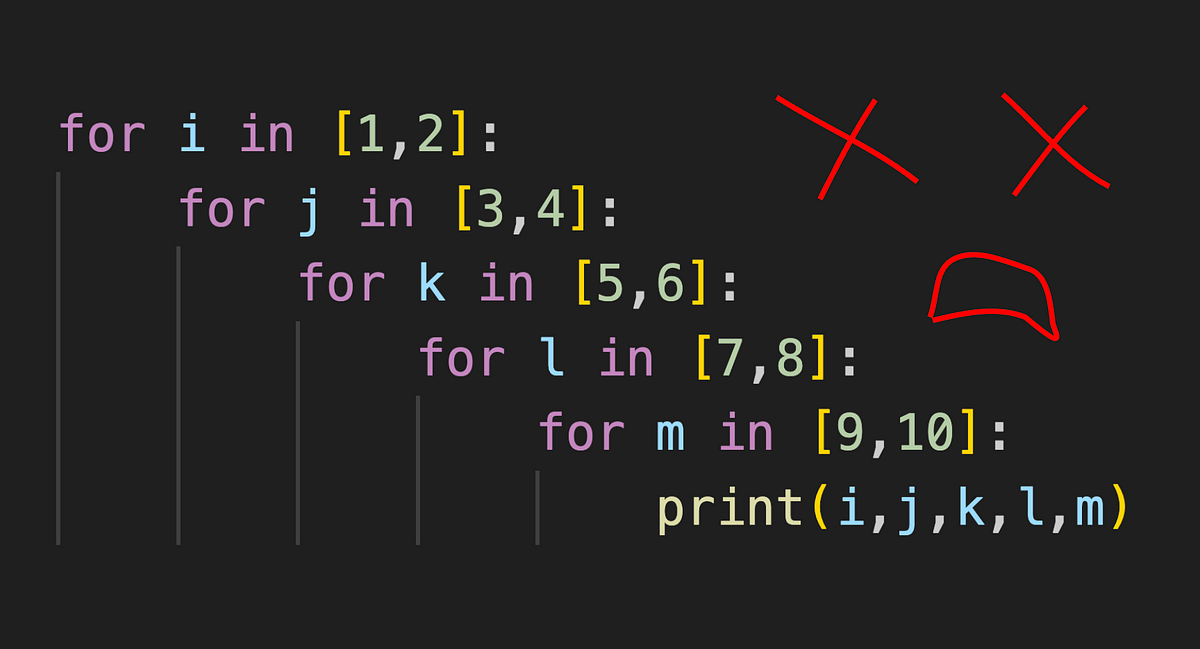Efficient Nested Loop Optimization in Python: A 30-Second Technique
Conceptos Básicos
Concise techniques to condense and optimize complex nested loops in Python.
Resumen
The article discusses a technique to efficiently condense and optimize multi-nested for loops in Python. It starts with a simple example of 3 nested loops and demonstrates how to refactor the code using a single loop and list comprehension.
The key highlights are:
- Nested loops can become unwieldy and difficult to maintain as the number of loops increases.
- The author presents a technique to condense multiple nested loops into a single loop using list comprehension.
- This approach reduces the code complexity, improves readability, and enhances performance by avoiding unnecessary iterations.
- The technique is demonstrated with a step-by-step example, showing how the original 3-nested loop code can be optimized into a single concise statement.
- The author emphasizes that this technique is particularly useful when dealing with complex data processing tasks that require multiple levels of iteration.
- By leveraging list comprehension, the optimized code becomes more Pythonic, succinct, and efficient compared to the original nested loop implementation.
Personalizar resumen
Reescribir con IA
Generar citas
Traducir fuente
A otro idioma
Generar mapa mental
del contenido fuente
Ver fuente
zlliu.medium.com
Condensing Multi-Nested For Loops in Python in 30 Seconds
Estadísticas
None
Citas
None
Ideas clave extraídas de
by Liu Zuo Lin a las zlliu.medium.com 04-21-2024
https://zlliu.medium.com/condensing-multi-nested-for-loops-in-python-in-30-seconds-b2a777a22a50
Consultas más profundas
How can this nested loop optimization technique be extended to handle more complex data structures beyond simple lists?
To handle more complex data structures beyond simple lists, the nested loop optimization technique can be extended by utilizing nested list comprehensions. By nesting list comprehensions within each other, it is possible to iterate over and manipulate multi-dimensional data structures such as nested lists, dictionaries, or tuples. This approach allows for concise and efficient code that can handle complex data structures with multiple levels of nesting.
What are the potential trade-offs or limitations of using list comprehension for nested loop optimization, and when might alternative approaches be more suitable?
While list comprehension offers a compact and readable way to optimize nested loops, there are potential trade-offs and limitations to consider. One limitation is the reduced readability for highly nested comprehensions, which can make the code harder to understand and maintain. Additionally, list comprehensions may not always be the most efficient solution for very large datasets or complex operations, as they can consume more memory compared to traditional loops. In such cases, alternative approaches like using generator expressions or breaking down the nested loops into separate functions may be more suitable to improve code clarity and performance.
How can this optimization technique be integrated into a larger software development workflow to ensure consistent code quality and performance across a codebase?
To integrate this optimization technique into a larger software development workflow and ensure consistent code quality and performance across a codebase, it is essential to establish coding standards and best practices within the team. This includes documenting the use of nested loop optimization techniques, providing examples, and conducting code reviews to ensure adherence to the established guidelines. Additionally, incorporating automated testing and performance profiling tools can help identify any inefficiencies or bottlenecks in the codebase, allowing for continuous optimization and improvement. By promoting collaboration, knowledge sharing, and regular code refactoring, the optimization technique can be effectively integrated into the development workflow to maintain high code quality and performance standards.
0
